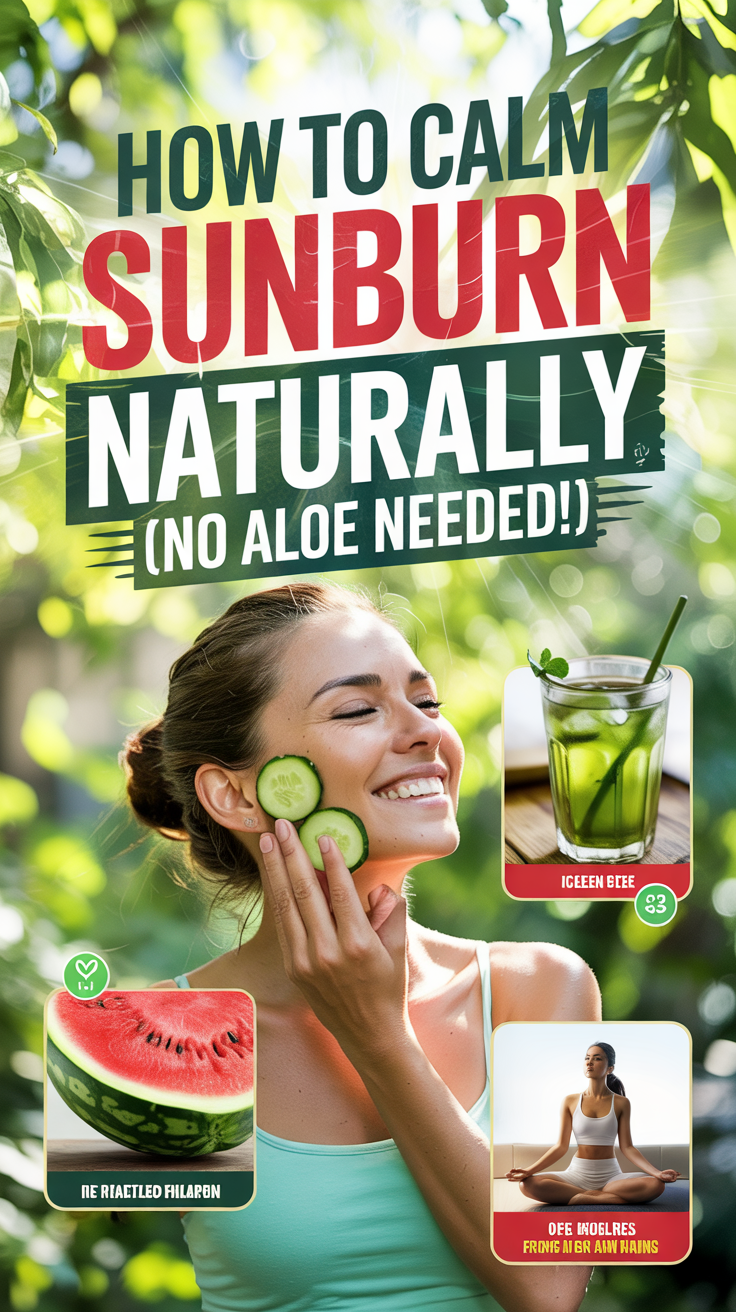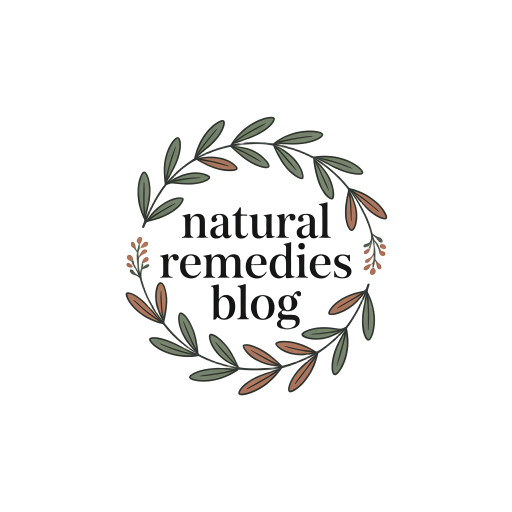How to Calm Sunburn Naturally (No Aloe Needed!)
To calm sunburn naturally without aloe, apply cool compresses or take a cool bath to reduce inflammation. Use witch hazel for its anti-inflammatory and soothing properties, and consider coconut oil for hydration. Herbal remedies like chamomile tea can also alleviate discomfort. Stay hydrated by drinking plenty of water and consider over-the-counter options like ibuprofen for pain relief. For more tips on prevention and aftercare, you’ll find helpful strategies ahead.
Cool Treatments for Sunburn Relief
How can you find quick relief from sunburn discomfort? Start with cool treatments to ease the pain.
Using cool water directly on your skin helps reduce inflammation, but avoid ice to prevent further damage. Instead, apply a damp washcloth or take a short cold shower. Fever over 103 F can also indicate a more severe reaction to sun exposure, so be mindful of accompanying symptoms. Remember that UV radiation exposure can cause painful inflammation, so it’s important to treat it promptly.
For added relief, consider colloidal oatmeal baths; they soothe inflammation and retain moisture.
Calamine lotion offers a cooling effect and alleviates itching, too.
Lastly, keep hydrated and rest to accelerate healing time. These effective sunburn remedies can help you feel more comfortable while your skin recovers from those irritating rays.
Herbal Remedies to Soothe Irritation
When sunburn leaves your skin irritated, herbal remedies can provide much-needed relief. Witch hazel helps reduce redness and acts as an antiseptic, while chamomile tea can be applied directly to soothe the skin’s discomfort. Additionally, using a cool water bath can help offer immediate relief by reducing inflammation. Don’t forget about coconut oil; its moisturizing properties can promote healing and keep your skin hydrated. Using proper hydration is also essential, as it supports the skin’s healing process.
Witch Hazel Benefits
Although sunburn can leave your skin feeling hot and irritated, witch hazel offers a natural remedy with numerous benefits to soothe these uncomfortable symptoms.
Its high tannin content provides powerful anti-inflammatory effects, reducing redness and swelling while easing pain. Witch hazel also moisturizes dry, irritated skin and helps lock in hydration. Additionally, studies show that tannins exhibit anti-inflammatory effects, which further enhances its soothing properties.
Plus, its antimicrobial properties protect against infection.
You can apply it using a cotton ball, cold compress, or convenient spray bottle for a cooling sensation.
For best results, opt for alcohol-free formulations and consider refrigerating it before use to maximize soothing benefits.
Chamomile Tea Applications
Chamomile tea, renowned for its soothing properties, serves as an effective herbal remedy for alleviating sunburn irritation. To use it, brew chamomile tea using tea bags or loose leaves, then let it cool to room temperature. You can apply it as a compress or place cooled tea bags directly on affected areas. Soaking cloths in the tea is another excellent option. Due to chamomile’s anti-inflammatory effects, it can significantly reduce redness and pain. Furthermore, sunburn accelerates skin aging, making it essential to treat it promptly. However, avoid this remedy if you’re allergic to pollen. Repeat applications throughout the day can enhance relief, offering a gentle, natural alternative to chemical treatments.
Coconut Oil Healing
After utilizing chamomile tea to soothe sunburn irritation, consider turning to coconut oil for its healing properties. Apply coconut oil a few days post-sunburn, ensuring your skin has cooled down. Its moisturizing, anti-inflammatory, and antimicrobial effects aid recovery and reduce discomfort. Coconut oil is a popular natural moisturizer that helps trap moisture in the skin.
| Property | Benefits | Usage Tips |
|---|---|---|
| Moisturizing | Locks in moisture, prevents peeling | Apply gently after cooling |
| Anti-inflammatory | Reduces redness and swelling | Use thin layers to soothe |
| Antimicrobial | Prevents infections on damaged skin | Combine with cool compresses |
Monitor your skin response and consult a professional if necessary.
Lifestyle Adjustments for Faster Healing
Healing from sunburn involves more than just topical remedies; lifestyle adjustments play a crucial role in speeding up recovery.
Start by increasing your water intake to rehydrate sunburned skin and support healing. Avoid dehydrating drinks like alcohol and caffeine.
Incorporate cool baths or showers to soothe irritation, and use damp compresses for relief. Prioritize sleep to enhance your immune response and promote skin regeneration.
Steer clear of tobacco and harsh soaps, opting for loose clothing to minimize friction. Lastly, stay out of direct sunlight, which can exacerbate damage, aiding your body in its recovery journey. Additionally, consider using moisturizing strategies to lock in hydration and further assist in healing.
Over-the-Counter Treatments to Consider
When you’re dealing with a painful sunburn, over-the-counter treatments can be a lifesaver. You can choose from pain relievers like ibuprofen and creams designed to reduce inflammation and promote hydration. Incorporating these options into your recovery plan can significantly ease discomfort and help your skin heal faster. Additionally, increasing water intake is vital for skin recovery post-sunburn.
Pain Relievers Options
Pain relief options are crucial for managing the discomfort of sunburn effectively.
Consider ibuprofen for its strong anti-inflammatory properties, or acetaminophen if you’re focused on pain relief.
Aspirin can also help reduce pain and swelling, but be cautious if you have gastric issues.
For localized relief, try gel pain relievers directly on the skin.
Always follow recommended dosages and consult a healthcare provider, especially if you’re on other medications or have health conditions.
Creams for Inflammation
After addressing pain relief options, it’s important to consider how creams can help reduce inflammation from sunburn.
Over-the-counter hydrocortisone cream is an effective choice, especially in a gentle 1% concentration.
Here are some key benefits:
- Reduces swelling, redness, and itching with regular application.
- Apply a thin layer three times daily for optimal relief.
- Cooling the cream before use enhances its soothing effect.
Always ensure you clean the affected area before application and avoid using it near your eyes.
If severe reactions occur, it’s best to seek medical advice rather than solely relying on these treatments.
Hydration With Moisturizers
Moisturizing your sunburned skin is essential for reducing discomfort and promoting healing.
Opt for lightweight, unscented moisturizers with hydrating ingredients like glycerin and shea butter.
Wait until your skin cools before applying to enhance absorption.
Apply several times a day to maintain hydration; this helps prevent dryness, which can worsen discomfort.
While regular moisturizers offer some relief, specialized after-sun products, like Neutrogena’s Sun Rescue Gel, may provide immediate soothing effects.
Remember to avoid fragrances and harsh chemicals that can irritate your skin.
Choosing the right moisturizer is crucial for your comfort and the healing process.
Natural Oils and Gels for Skin Recovery
Natural oils and gels can offer great relief and promote skin recovery.
Consider these options:
- Lavender oil to reduce inflammation and calm your skin.
- Coconut oil for deep hydration and nourishment.
- Cucumber gel for a refreshing, cooling effect.
Always dilute essential oils with carrier oils to avoid irritation. Additionally, using soothing natural remedies can enhance your skin’s healing process.
Apply them gently to avoid further trauma, and patch-test on a small area first.
With consistent use, these remedies can help reduce inflammation and support your skin’s healing process.
Happy healing!
Prevention Strategies to Avoid Future Sunburn
What steps can you take to effectively prevent future sunburns?
First, apply broad-spectrum sunscreen with at least SPF 30, and reapply every two hours.
Wear protective clothing, including long sleeves and a wide-brimmed hat.
Don’t forget sunglasses with UV protection to shield your eyes.
Seek shade during peak UV hours, typically from 10 am to 4 pm.
Be mindful of your skin type and individual risk factors when selecting sunscreen.
Remember, UV rays can penetrate clouds, so always stay protected outdoors.
Lastly, check local UV forecasts to plan your activities effectively and minimize exposure. Additionally, consider incorporating proper hydration into your routine, as it helps maintain skin elasticity and reduces susceptibility to sun damage.
Aftercare Tips for Sun-Exposed Skin
When you’ve spent too much time in the sun, taking the right steps in aftercare can make all the difference in your skin’s recovery.
Follow these tips to ensure better healing:
- Rinse with cool or lukewarm water, then gently pat skin dry and keep it slightly damp.
- Use a non-perfumed moisturizer to lock in moisture, preferably while your skin is still damp.
- Avoid further sun exposure and don’t scratch or pop blisters to prevent infection. Additionally, incorporating natural antibacterial properties into your skincare routine can help promote healing and prevent infection.
The Importance of Staying Hydrated
Hydration is a crucial ally in the battle against sunburn, playing a vital role in both recovery and comfort. When you’re sunburned, your skin loses fluids, making it essential to drink plenty of water.
Staying hydrated speeds up healing by delivering nutrients to delicate tissues, while also alleviating redness and pain. Dehydrated skin becomes more sensitive, increasing irritation and prolonging recovery time. Additionally, maintaining proper hydration helps prevent complications associated with conditions like Hand, Foot, and Mouth Disease.
To replenish lost electrolytes, consider drinking sports drinks or eating electrolyte-rich foods.
Protective Measures Against Sun Damage
Protecting your skin from sun damage is essential for maintaining its health and preventing painful sunburns.
Here are some effective measures you can take:
- Wear tightly woven fabrics or clothing with a high UPF rating to block UV rays.
- Apply broad-spectrum sunscreen with at least SPF 30 and reapply every two hours.
- Seek shade during peak sun hours and plan outdoor activities early or late in the day.

